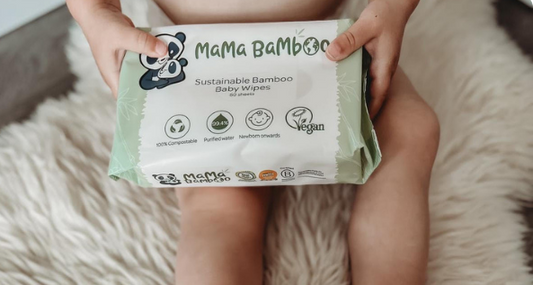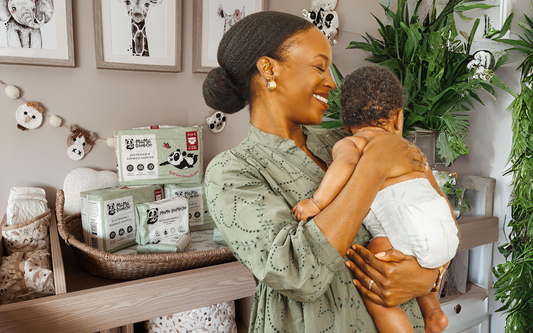Bamboo nappies limit nappy rash naturally
Keeping babies' skin dry
The first step to avoiding nappy rash is to keep your little one's skin as dry as possible. Bamboo fibre is naturally super absorbent - it wicks moisture away from your baby's skin. Bamboo has been shown to be far more absorbent than cotton and can take up to three times its weight in water.
Let the air circulate
Unlike a traditional disposable, a bamboo nappy lets the skin breathe. Most regular disposable nappies are made from oil-based plastic materials such as polypropylene. As an adult, how do you think it would feel to wear plastic underpants? Urgh.
Bamboo is not only naturally 'breathable' but just like silk it is temperature regulating too, helping to keep skin cool, dry and healthy.
Temperature-regulating
Like silk, bamboo has special thermo-regulating properties helping to keep your babies' skin cool. This in turn reduces the sweat glands found in the genital area which can exacerbate nappy rash.
'No-rub' softness
Commonly used in activewear, bamboo is well known to be an exceptionally soft material. So whilst keeping baby's skin dry, the nappy itself is super soft. As your newborn baby becomes more mobile, you simply don't want anything rubbing against their delicate skin.
Avoid nasty ingredients
Babies' skin is 30% thinner than an adults and highly sensitive. Many nappies contain ingredients that irritate the skin. Avoiding products that contain chlorine, alcohol/ ethanol, latex, PVC and phthalates will reduce nappy rash, eczema and skin irritation.
Chlorine free
Chlorine is the main ingredient in bleach. Yet many nappies still contain chlorine as it is often used to whiten the material and pulp. Mama Bamboo nappies are free from elemental chlorine.
Alcohol free
Alcohol, sometimes described as ethanol, is used in many of the standard disposable nappies. It can dry out babies' skin and lead to irritation. Mama Bamboo nappies are alcohol free.
No Phthalates
Phthalates are a little known 'nasty' in many nappy ranges. They are added to soften plastic to make it more flexible and durable. Not enough is known about the effects of phthalates, yet many companies use them in baby products ranges and in personal cosmetics.
When you choose a nappy that is free from chlorine, alcohol, Latex, PVC, phthalates you will reduce the chances of your baby's skin becoming inflamed and sore.
Cheap nappies - are they a false economy?
Sure, the plastic nappies are cheap but you're going to need to buy a nappy cream as well.
Nappy rash cream is big business.
Bamboo is more expensive to use in our production than plastic materials and cheap cotton, but reduces the need to regularly use a nappy rash cream.
Putting the many environmental benefits of using bamboo aside, the specially selected ingredients in our nappies and wipes will help to limit the chances of your baby suffering from nasty nappy rashes.
Don't just take our word for it - read the Mama Bamboo Customer Reviews
Here are just a few of our most recent reviews:
"Soft touch for sensitive skin"
"These nappies are amazingly silky soft and durable."
"The best nappies we’ve tried. Love these they are soft & comfy, don’t have any rubbish in them and hold the pees & poos perfectly."
"Highly recommended for very sensitive skin. My son has a severe nappy rash and this bamboo nappy really helped the rash to heal quickly and to keep his bum dry. A BIG thanks for this one!"
"Lovely nappies super soft. Very absorbent."




